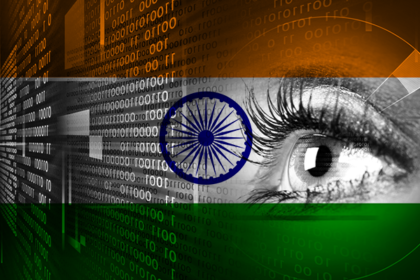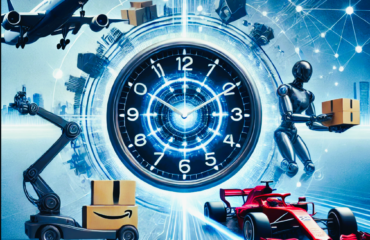
The first thought that comes to my mind the moment I hear about Artificial Intelligence or AI which is very frequent of late is that of the James Cameron movie starring Arnold Schwarzenegger called the Terminator where the machines created by man become self-aware, take decisions on their own and take over the earth…
So, what does an AI system do?
They basically try to reproduce the functioning of the human brain using its own neural networks. They use a technique called deep learning which adjusts the relationships of computer instructions designed to behave like neurons
So you tell the AI what you want it to learn and provide it with clearly labelled examples it analyses the patterns in those data and stores them for future application. The accuracy of the pattern depends on the completeness of the data, so the more data you feed into the AI system the more accurate and useful it becomes.
While everyone I meet says India has lost out to China in AI has the technology really matured for us to have lost out?
Let’s find out by understanding the shortcomings that are there presently:
1. AI can only understand and interpret the data within the narrow confines of the supplied context
2. AI does not understand what it has analysed and cannot apply the same analysis in a different context
3. Once the Neural network of the AI has been trained even its own designer doesn’t know how it is doing what it does…This is often known as the dark side of AI and reminds me again of the Terminator movie…
Google has recently published a paper where it showed that it could trick any AI systems into recognising a banana as a toaster! and this was done without even understanding what exactly the concerned AI systems had learned…
It leads me to conclude that the AI industry and technology is just evolving and it is the right time for India to get onto the bus in a big way.
Let’s understand what works in favour of India and what is it that we will need to work on.
1. First and foremost is India’s population and the huge variety and differences in culture across the population.
So, while China also has the same advantage the average age of India’s population of 1.3 billion is around 28 years to 37 years of China…So we have a much younger population than China…How has China used this to its advantage…
They have introduced AI in a big way in facial recognition and they have used the 20 million CCTV cameras that have been installed across China for the same.
The data from 55 cities is processed centrally through a system known as Sharp eyes…
What has this led to
1. 530+ patents in surveillance has been filed by China in 2017 alone
2. 900+ facial recognition patents have been filed by China in the last year alone
3. Data, Data and more Data
We Indians Use WhatsApp for messaging…Facebook for social media…. Google for search…Amazon and Flipkart for e-commerce all of which are foreign companies
So where will Indian companies get the data that they need to fine tune their AI algorithms…
Let’s see what China has done…
They have created Alibaba for e commerce…We chat for messaging and other services and Baidu for search…
Further they also provide access to public data for usage by local companies to help them improve their algorithms. Consider the example of Sensetime founded in 2014 which is considered as a strong start-up in the facial recognition space.
They finetuned their algorithms by working with Hong Kong Police to help identify license plates of suspects and then with China mobile by using its facial technology for them or the case of Megvu which has access to 1,3 billion face records from the Public security Ministries database
India has its own Aadhar which covers data of almost 99% of the population. While the government had agreed for usage of Aadhar for enrolment of customers in the fintech and telecom space a latest ruling by the supreme court has annulled the same
It is very important that we come up with a regulation which clearly demarks personal and public data and the so declared public data should be available for AI companies to fine tune their products and algorithms
4. Digital payments
China has a very strong mobile payments industry with two tech giants, WeChat payments with 1 billion users and Alipay of Alibaba with 500 million users
India has also made tremendous progress on this front in the last two years but a strong government body run by professionals like UDAI will help to iron out the bottlenecks here and there.
5. Funding and Start-up incentives
Chinas ecosystem thrives on competition…Local governments compete for start-up registrations from the provincial level to city level and district level. Local governments will finance up to 20% of investments in start-up funds and create tax incentives to promote private investments into stratus. A case in example Megvu has raised 460 million dollars from the Chinese govt VC fund and Cloudwalk received a grant of 300 million dollars from the Guangzhou Municipal Government
This is one area where India could really copy from China to facilitate creation of more start-ups in the AI space
India’s ecosystem for start-ups is presently restricted to 3 to 4 cities like Bangalore, Delhi NCR, Mumbai and Hyderabad and India will need to find a way to grow this to across the country.
6. Internet Penetration
Internet penetration in India is growing at a fast pace and most of the first time and new users are logging in through mobile which is better from an AI perspective.
7. India’s software services legacy
While India successfully rode the software services and outsourcing boon and established itself as a major player in this sector which led to creation of a $160 billion IT services industry and the creation of jobs for fresh engineering graduates
India’s software companies have built capabilities over the years and with automation there is lot of these human resources who are becoming redundant (the expected job loss in India itself is around 7 lakhs by 2021) …With a little training all these human resources could be shifted for work on AI which would result in India having a head start on the services front.
Like in Software services I feel that AI also will evolve into two segments as it grows.
1.Into a product segment …which is where we are seeing most of the action presently
2.Into the services sector …Which will grow faster once companies start adopting AI technology. In the software services sector the ratio between product and services was one to 400 though AI might not exactly follow the same ratio from the point of creation of jobs for its young population also it makes more sense for India to focus more on the AI services sector.
The Indian government has identified the following key sectors for focus of AI
· Health.
· Agriculture
· Education
· Smart cities
· Smart Mobility
· Retail
· Manufacturing
· Energy
India holds some unique challenges for the AI sector. India has 22 national languages, 40 plus formal languages and 800 plus dialects and in addition we have created combinations of local languages with English which results in Gulabi as a colour or retail delivery on COD basis (Cash on Delivery)
Indian software companies are already into the act with the creation of Igmio by TCS, Mana by Infosys and Holmes by Wipro.
We are also seeing creation of startups the top five based on funding being
1. Manthan…Data Analytics…based out of Bangalore
2. Sigtuple…Computer Vision… based out of Bangalore
3. Haptik…Chatbots…based out of Mumbai
4. Creditvidya…Fintech…based out of Mumbai
5. Mihup Communications…Voice recognition …based out of Kolkata
As India gets its AI act together to get its foothold in the AI space and with the key players like Microsoft, Google, Facebook and Baidu Apollo are making their AI software’s open source this area is likely to see a lot of action, investment and job creation.

This and a lot more were discussed by myself and other eminent persons at the #AICRA Summit this week at the Vigyan Bhavan, New Delhi. With such discussions, budget allocation and collaboration between the businesses, venture capitalists, startups and the government, India is all set to leapfrog forward.



